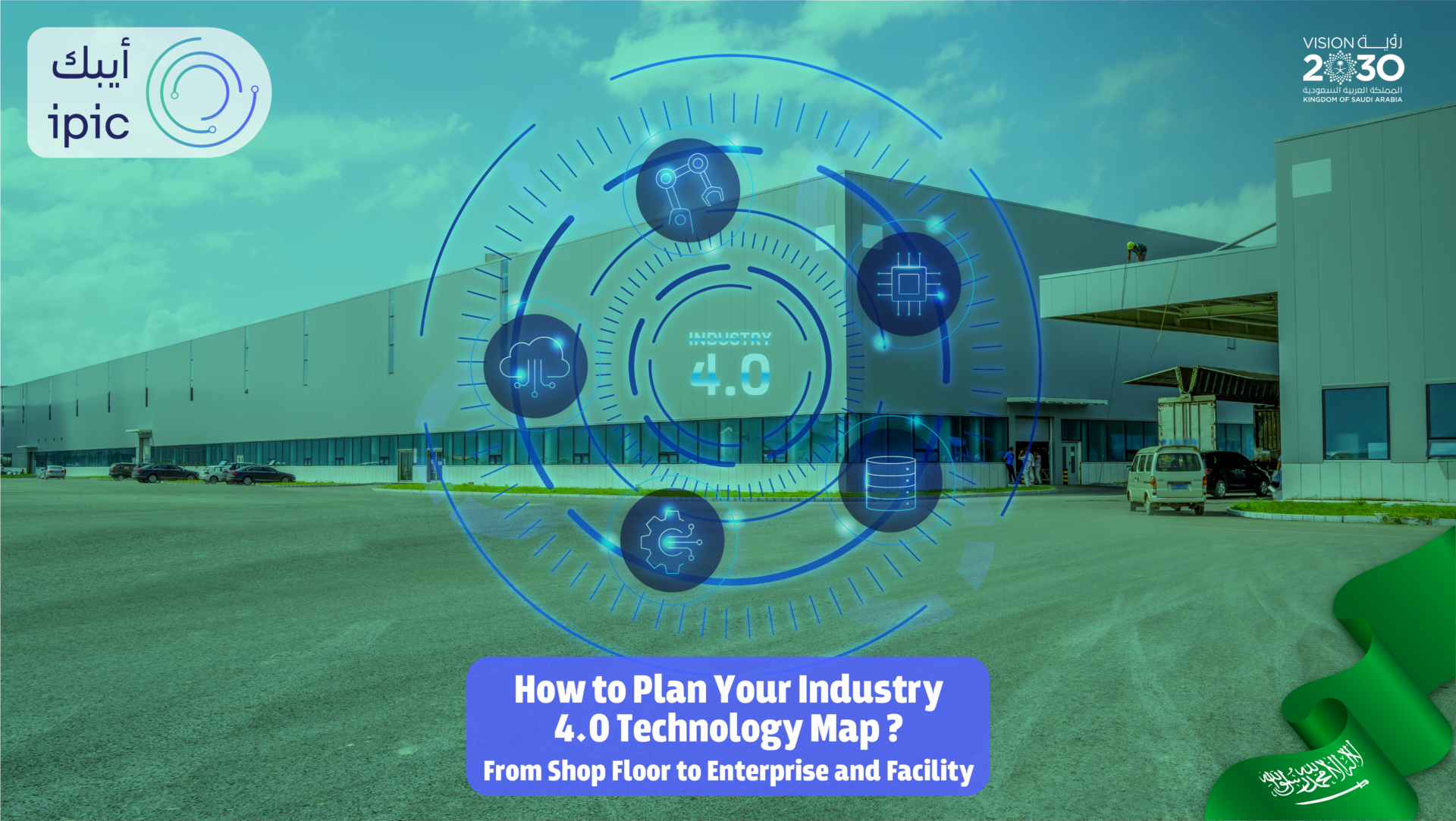How to Plan Your Industry 4.0 Technology Map: From Shop Floor to Enterprise and Facility
Introduction
Digital transformation in manufacturing is no longer a buzzword—it’s a strategic imperative. But to implement Industry 4.0 effectively, factories need more than isolated technologies. They need a structured technology roadmap that covers every layer: from the shop floor, to the enterprise, to the facility infrastructure.
This article breaks down the Industry 4.0 Technology Map across three layers and offers a practical step-by-step plan to help factories build their full digital stack.
Part 1: Understanding the Three-Layer Industry 4.0 Map
1. Shop Floor (Operational Technology Layer)
This is where the actual production happens—machines, lines, sensors, and operators. Industry 4.0 introduces real-time connectivity, smart automation, and performance tracking.
Key Technologies:
- PLCs, SCADA, and HMI systems
- IoT sensors and edge devices
- Manufacturing Execution Systems (MES)
- Machine vision and robotics
- Predictive maintenance tools
- OEE dashboards and KPIs
👉 Goal: Real-time visibility, process automation, quality control, and predictive insights.
2. Enterprise Layer (Information Technology)
This layer focuses on planning, resource management, and strategic decisions.
Key Technologies:
- Enterprise Resource Planning (ERP) – e.g., Odoo
- CRM, HR, Procurement, and Finance systems
- Advanced analytics and business intelligence (BI)
- Integration with MES for closed-loop manufacturing
- Cloud platforms and cybersecurity frameworks
👉 Goal: Streamlined operations, data-driven decisions, and seamless integration with the shop floor.
3. Facility and Infrastructure Layer (Smart Facility Layer)
The factory environment itself plays a critical role in efficiency and sustainability.
Key Technologies:
- Energy Management Systems (EMS)
- Building Management Systems (BMS)
- Smart lighting, HVAC, and utility controls
- IoT-based energy monitoring
- Sustainability dashboards (carbon footprint, water usage)
👉 Goal: Reduce energy costs, improve sustainability, and enable autonomous facility control.
Part 2: How to Plan Your Full Industry 4.0 Technology Map
✅ Step 1: Assess Current Digital Maturity
Start with a baseline. Use a framework like the Smart Industry Readiness Index (SIRI) to assess digital maturity across all factory dimensions—processes, technology, and organization.
🔍 Tip: Conduct a structured audit covering MES, ERP, IoT readiness, cybersecurity, and skill levels.
✅ Step 2: Define Strategic Goals
Set clear transformation goals aligned with business KPIs:
- Reduce downtime by 30%
- Increase production throughput
- Improve traceability and compliance
- Reduce energy consumption by 20%
These goals will guide your tech stack decisions.
✅ Step 3: Map Your Layers (Shop Floor → Enterprise → Facility)
Use the three-layer model and start identifying the technologies needed at each level:
- Shop Floor: MES, IoT, predictive maintenance, quality control
- Enterprise: ERP, data integration, analytics, document management
- Facility: Energy dashboards, HVAC automation, lighting control
Link each technology to the problem it solves or KPI it improves.
✅ Step 4: Choose Scalable and Integrated Technologies
Select platforms that are modular and can scale across sites. Prioritize:
- Open API and cloud support
- Cybersecurity features
- Compatibility with existing systems
- Local support and long-term viability
Examples:
- MES: AVEVA
- ERP: Odoo
- IoT: Schneider
✅ Step 5: Create a Phased Implementation Roadmap
Don’t do it all at once. Plan in waves:
- Phase 1: Visibility – dashboards, sensors, basic MES
- Phase 2: Control – integration, automation, alerts
- Phase 3: Optimization – predictive analytics, digital twin, AI
- Phase 4: Autonomy – closed-loop systems, remote operations
Each phase should deliver measurable ROI.
✅ Step 6: Train Your People and Change Culture
Technology alone won’t transform your factory. Train operators, engineers, and management on the new tools and encourage a culture of digital thinking.
Use cross-functional teams and reward digital adoption.
✅ Step 7: Monitor, Improve, and Scale
After each implementation phase:
- Measure performance (e.g., OEE, downtime, cost per unit)
- Collect feedback
- Refine workflows
- Scale successful practices to other lines or facilities
Continuous improvement is the core of Industry 4.0 success.
Conclusion
Industry 4.0 is not about implementing random technologies—it’s about building an integrated digital ecosystem across shop floor, enterprise, and facility levels. A well-planned technology map ensures that every investment drives performance, sustainability, and growth.
Start with your strategy. Map the layers. Digitize with purpose.



